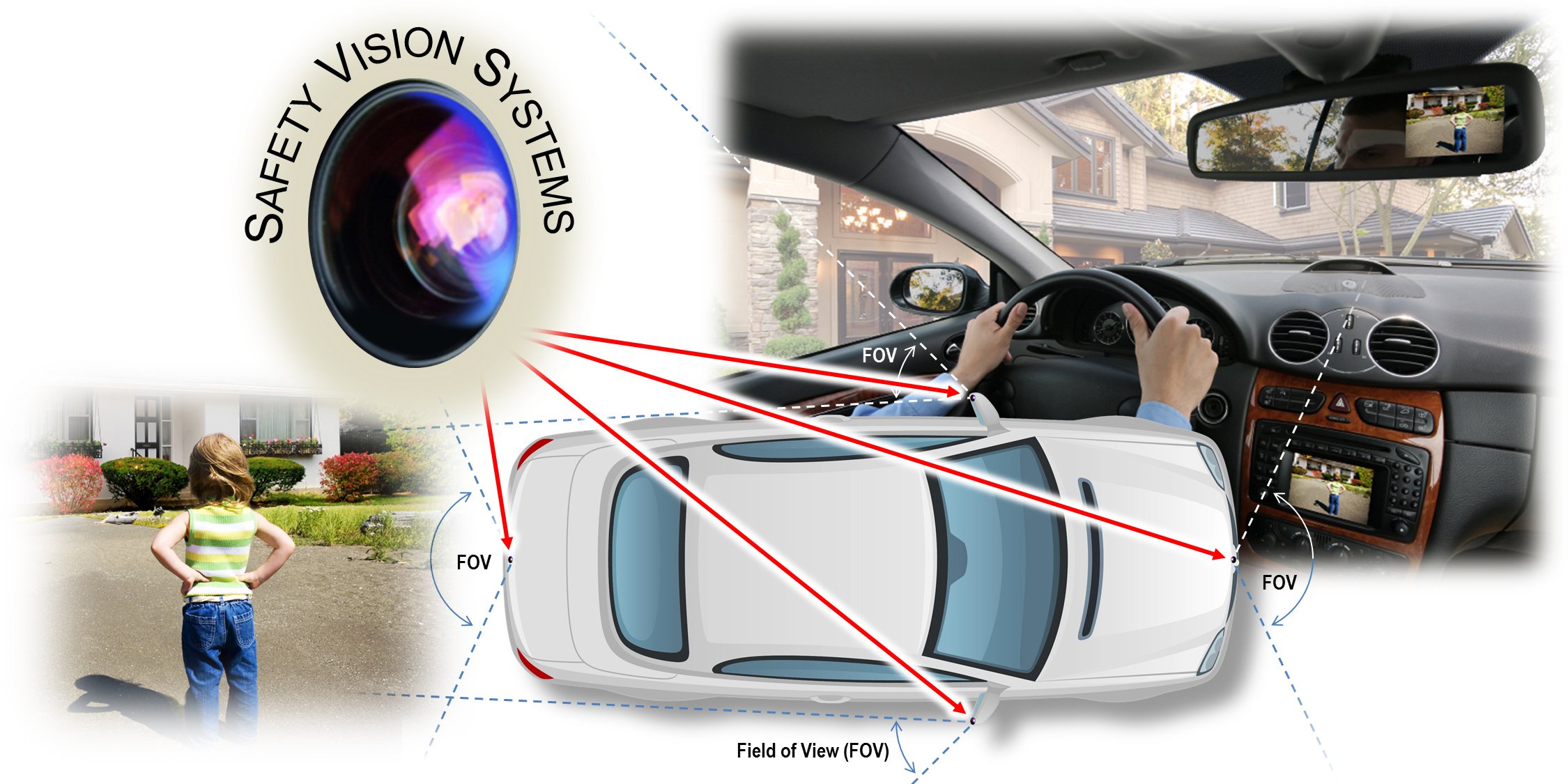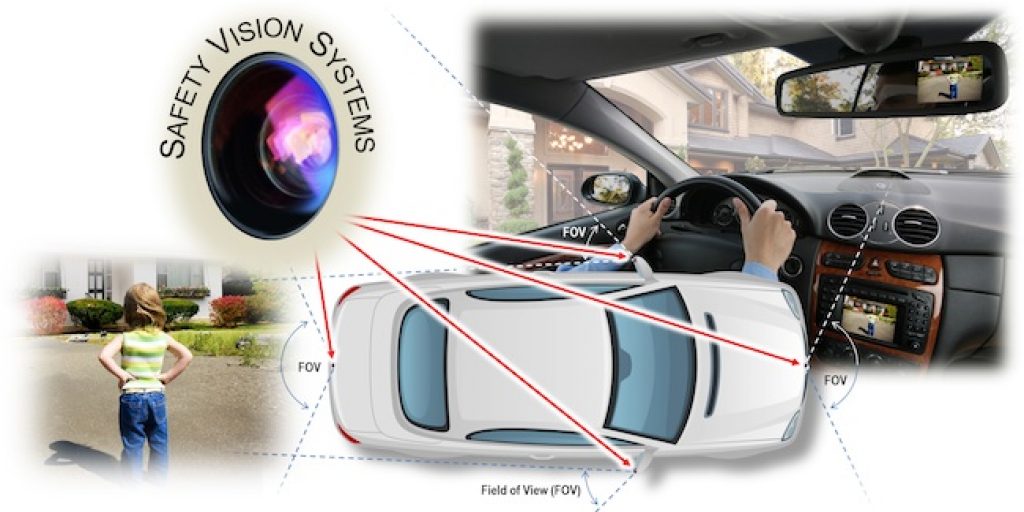By Don Nesbitt, Marketing Manager in the High Speed Signal Conditioning Group
Analog Devices
This article was originally published by Hanser Automotive Magazine. It is reprinted here with the permission of the original publisher.

The emerging field of video-based automotive safety was in the headlines during December 2011 when the U.S. Department of Transportation proposed safety regulations to help eliminate the blind zones behind vehicles that can make it difficult to see pedestrians — especially toddlers. The proposed rearview-visibility rule was required by Congress as part of the Cameron Gulbransen Kids Transportation Safety Act of 2007 (“K.T. Safety Act”), named for a two-year-old boy who was accidentally killed by his father in the family’s driveway. Back-over accidents cause about 300 deaths and 18,000 injuries a year.
The recent mandate requires rearward detection that will allow drivers to “see” behind the vehicle using new technology such as a rear-mounted video camera. The proposal calls for expanding the required field of view for all passenger cars, pickup trucks, minivans, buses, and low-speed vehicles so that drivers can see directly behind the vehicle when backing up. By September 2012, 10 percent of new vehicles must comply with the new requirements of the proposed rule, 40 percent by September 2013 – and 100 percent by September 2014. Some vehicles can now be purchased with surround-vision safety systems that show a 360 degree view of everything near the vehicle’s proximity.
The Rise of Rearview Video Will Improve Safety
To meet the new standard, the National Highway Traffic Safety Administration (NHTSA) projects that automobile manufacturers will install rear mounted video cameras and in-vehicle displays. NHTSA’s preliminary assessment was that rearview video (RV) systems have greater potential to improve vehicles’ rear visibility than sensor-based rear object detection systems and rear-mounted convex mirrors.
Rearview video represents the latest in driver-assistance safety, merging infotainment and communication technologies. A growing number of vehicles in the U.S. – and around the world – are already equipped with RV systems which permit a driver to see much of the area behind the vehicle using an in-car video display that shows the image from a video camera mounted on the rear of the vehicle. Aftermarket RV systems are also available and retail for about $60 to $200.
Rearview Video System Design Challenges
Designers of RV systems must be concerned with performance issues and robustness in order to meet automotive makers’ strict requirements. For starters, the rearview camera must be as small as possible to fit seamlessly into the vehicles’ current body structure. Designers of OEM systems have been hard-pressed to eliminate some of the dozen or more electronic components that go into an RV camera. However, ICs are being introduced to help reduce overall assembly size by eliminating numerous discrete electronic components in favor of an integrated approach. For example, a new RV camera from a leading manufacturer integrates high-speed video reconstruction filters with short-to-battery protection in a package that reduces space requirements by 90% when compared to an equivalent discrete solution. Space will be even a more critical for future surround-vision safety systems using four or more cameras per vehicle.
A second pressing design issue centers on the robustness of the signal chain, as RV systems must be virtually indestructible. A robust signal chain is required to survive an overvoltage condition up to 18 V, be ESD-hardened, and operate without interruption in the presence of large common-mode voltage noise. Since video, ground, and battery signals all run on the same long cable assembly, one of the most severe faults for any video signal is to be shorted directly to the battery voltage. This short to battery could not only damage the RV or surround-vision system but also the more expensive head-unit video systems.
In addition, sources of transient noise abound: windshield wipers, power windows, and the A/C compressor motors turning on and off – all cause current and voltage spikes in chassis ground resulting in common-mode error voltages that can wreak havoc on RV systems. Noise from these sources can degrade image quality and even damage electronic systems. Anything outside of a regular video signal can be seen as noise, but, regardless of interference source, car manufacturers expect OEMs to maintain stringent requirements regarding robustness. Most often harmful voltage surges come from electrostatic discharge, or ESD, a single, fast, high current transfer of electrostatic charge. ESD can permanently damage electronic systems. While most manufactures install safeguards, ESD-hardened ICs provide an extra level of robustness.
New automotive operational amplifier and analog video filter ICs, such as Analog Devices’ ADA4830 series of difference amplifiers and the ADA4433/32 series of video reconstruction filters, offer integrated short-to-battery protection, large common-mode rejection, and heightened ESD tolerance in small footprints. These devices integrate many costly, bulky discrete components such as capacitors, diodes, transistors and switches that typically protect standard operational amplifiers. The fault detection output of these new integrated amplifiers and video filters allows for proactive and speedy diagnosis; eliminating discrete electronic components allows system designers to shave about 20 percent from their component costs while saving up to 90% PCB real estate – an important feature for today’s rearview video and tomorrow’s surround-vision safety systems.
In just a few short years rearview video – and eventually surround-vision — will be a reality for all cars. RV system designers can save space, time, and resources now by adopting integrated ICs that also offer crucial overvoltage protection along with excellent picture quality, low power consumption, and diagnostic features. Most importantly, the new generation of rearview video and communication systems can help to end the tragedy of back-over deaths in the U.S. and around the world. Robust video amplifier integrated circuits (ICs) are arriving to meet the mandate for automobile rearview and, increasingly, surround-view safety standards; new ICs protect sensitive video circuitry from a short to the battery voltage in equipment that will help save lives.
Don Nisbett is a marketing engineer in the High Speed Signal Conditioning Group. Prior to his current position, he held product engineering and applications engineering responsibilities, respectively. He has worked at Analog Devices Inc since 2002, following his graduation from Worcester Polytechnic Institute with a Bachelor of Science degree in Electrical Engineering.


